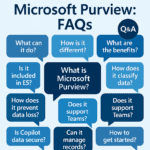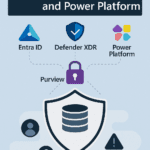

SB523 – Using Subscription Billing for Intercompany Billing and Departmental Allocations with Customer Split in D365 Finance
Table of Contents
Toggle🚀 Introduction
Many organizations leverage Subscription Billing not just for customer subscriptions, but also for internal intercompany billing and departmental cost allocations.
When no direct charges are applied to customers, businesses can still use Subscription Billing to automate recurring internal billing between:
- 🏢 Departments
- 🌍 Subsidiaries
- 🏬 Sister companies
This enhances financial transparency, improves compliance, and reduces manual administrative overhead in Microsoft Dynamics 365 Finance.
This article also explains how to allocate cost across multiple departments within the same legal entity using Customer Split functionality, and how to set up intercompany billing using subsidiary companies as customers.
🛠️ Setting Up Intercompany Billing Using Customer Split
Step 1: Create Intercompany Customer Accounts
- In Accounts Receivable > Customers, create customer accounts representing each subsidiary legal entity.
- Assign appropriate Intercompany relationships if needed.
Example:
| Customer ID | Subsidiary Company Name | Financial Dimension (Business Unit) |
| SUB_A | Subsidiary A | BusinessUnit = SUBA |
| SUB_B | Subsidiary B | BusinessUnit = SUBB |

Step 2: Create a Billing Schedule
- Set Invoice Transaction Nature Code to Sales Order and Customer split to Yes.

- Create a billing schedule line for the total recurring cost (e.g., £10,000 for IT services).

Step 3: Apply Customer Split for Intercompany
- Enable Customer Split on the Billing Schedule line.

- Define how the cost should be split between intercompany customer accounts.
Example Allocation:
- Head office: 40 % (£4,000)
- Subsidiary 1: 30% (£3,000)
- Subsidiary 2: 30% (£3,000)

Step 4: Generate Invoices

- Subscription Billing will automatically generate separate Sales Orders and Invoices to each subsidiary.

- Resulting intercompany journal entries will post correctly based on dimensions.
- Multiple deferrals have been created too and ready to be recognised.


📋 High-Level Overview: Using Same Steps for Internal Departmental Allocation
If you are allocating costs internally within the same legal entity (not across subsidiaries), you can follow a similar workaround:
| Area | Intercompany Setup | Internal Departmental Setup |
| Customer Accounts | Customers representing subsidiaries | Customers representing internal departments |
| Financial Dimensions | Business Units, Legal Entities | Cost Centers, Departments |
| Invoice Type | Sales Order Invoice | Sales Order Invoice |
| Customer Split | Between subsidiaries | Between departments |
| Posting | Intercompany revenue/expense | Internal expense allocations |
📌 Note: No “Intercompany Accounting” module is triggered for internal departments within the same entity; only Financial Dimensions are used.
🎯 Key Scenarios Where Subscription Billing Helps Internal Allocations
💻 Intercompany IT Services & Software Allocations
Scenario: A centralized IT department provides services like cloud storage and cybersecurity to subsidiaries.
How Subscription Billing Helps:
- Automates monthly IT cost allocations.
- Ensures monthly revenue recognition aligned with IFRS 15.
- Simplifies intercompany settlements.
Example Journal:
- Debit: IT Expense (Subsidiary A) £10,000
- Credit: Intercompany Revenue (HQ) £10,000
🏗️ Internal Equipment Leasing & Asset Depreciation
Scenario: Machinery is leased internally to production facilities.
How Subscription Billing Helps:
- Automates internal lease expense recognition.
- Ensures compliance with IFRS 16 Lease Accounting.
Example Journal:
- Debit: Equipment Lease Expense (Subsidiary B) £5,000
- Credit: Intercompany Lease Revenue (Headquarters) £5,000
👨💼 Intercompany Employee Salary & Benefits Allocation
Scenario: Centralized payroll and HR services provided to subsidiaries.
How Subscription Billing Helps:
- Allocates salary and benefits automatically.
- Aligns payroll expenses with revenue generation activities.
Example Journal:
- Debit: Salary Expense (Subsidiary C) £20,000
- Credit: Intercompany Payroll Allocation (Parent Company) £20,000
🏛️ Shared Corporate Services (HR, Finance, Compliance)
Scenario: Parent company provides centralized HR, finance, legal, and compliance services.
How Subscription Billing Helps:
- Fairly allocates shared service costs to subsidiaries.
- Automates monthly internal charges.
Example Journal:
- Debit: Shared Services Expense (Subsidiary D) £50,000
- Credit: Intercompany Service Revenue (Parent Company) £50,000
🔬 Subscription-Based Cost Sharing for R&D Investments
Scenario: Global R&D expenses are shared across subsidiaries.
How Subscription Billing Helps:
- Accurately allocates R&D investments.
- Aligns reporting with regulatory compliance.
Example Journal:
- Debit: R&D Expense (Subsidiary E) £25,000
- Credit: Intercompany Revenue (Global R&D Team) £25,000
🚛 Internal Subscription for Manufacturing Parts & Raw Materials
Scenario: Central manufacturing unit distributes parts to plants monthly.
How Subscription Billing Helps:
- Provides predictable cost planning for plants.
- Automates monthly raw material cost allocations.
Example Journal:
- Debit: Raw Materials Expense (Subsidiary F) £500,000
- Credit: Intercompany Revenue (Manufacturing Unit) £500,000
✅ Key Benefits of Subscription Billing for Intercompany Billing and Departmental Allocations
✅ Automates Internal and Intercompany Cost Allocations – No more manual journal entries.
✅ Improves Financial Transparency – Clear audit trails.
✅ Enhances Compliance – Meets IFRS 15 & 16.
✅ Reduces Administrative Overhead – Fewer errors and manual interventions.
✅ Flexible for Both Legal Entities and Departments – Works across scenarios.
🏁 Summary
Even when companies are not billing external customers, Subscription Billing in D365 Finance offers powerful tools for internal financial management.
By leveraging Customer Split and proper subsidiary or departmental customer setup, organizations can:
- Automate cost allocations across business units or departments.
- Ensure proper revenue/expense recognition and compliance.
- Improve financial reporting transparency.
- Eliminate manual GL allocation journal processes.
📢 Coming Up Next: SB524
In the next article, SB524 – Using Subscription Billing with Project Management in D365 Finance, we shift our focus to project-based operations.
You’ll learn how to:
- 🎯 Integrate Subscription Billing with project contracts and subprojects
- 📆 Automate recurring billing for services like support and maintenance
- 📊 Apply revenue and cost deferrals to time, expense, and fee transactions
- ✅ Improve compliance with IFRS 15 through structured revenue recognition
Whether you’re managing IT services, consulting engagements, or long-term maintenance contracts, SB524 will guide you through unlocking full billing automation within D365 Project Management. Stay tuned! 🚀
Expand Your Knowledge: See More Subscription Billing Blogs
I am Yogeshkumar Patel, a Microsoft Certified Solution Architect and ERP Systems Manager with expertise in Dynamics 365 Finance & Supply Chain, Power Platform, AI, and Azure solutions. With over six years of experience, I have successfully led enterprise-level ERP implementations, AI-driven automation projects, and cloud migrations to optimise business operations. Holding a Master’s degree from the University of Bedfordshire, I specialise in integrating AI with business processes, streamlining supply chains, and enhancing decision-making with Power BI and automation workflows. Passionate about knowledge sharing and innovation, I created AI-Powered365 to provide practical insights and solutions for businesses and professionals navigating digital transformation. 📩 Let’s Connect: LinkedIn | Email 🚀




















Post Comment